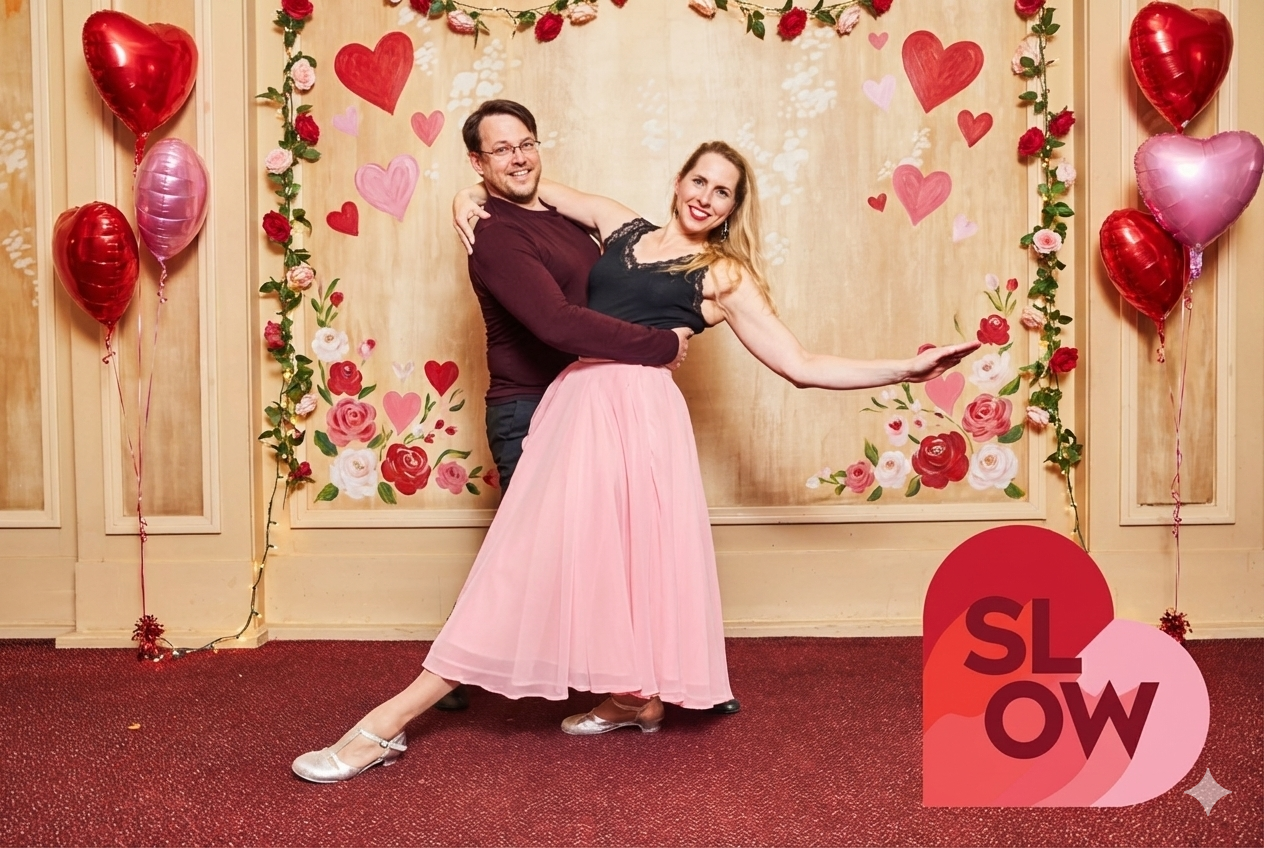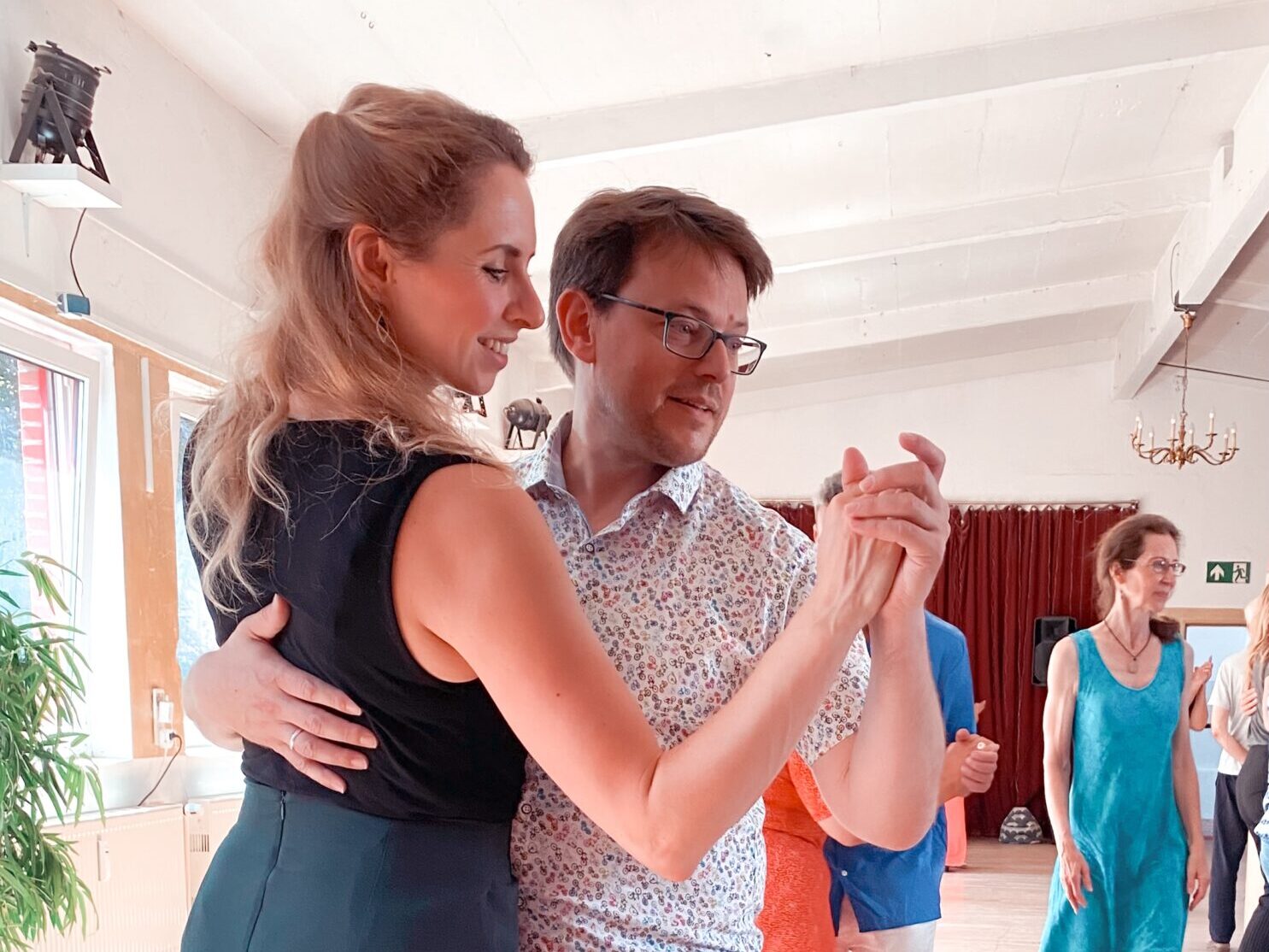On V11, the boat where we spent many hours dancing, I meet with Didi and Iris. Both ladies have been active in the swing world for many years. When they started dancing Slow Bal, they both chose to dance as a lead. Fortunately, in Slow Bal we see more and more people choosing the role they like, instead of falling into the classic roles where the man leads and the woman follows. Because why would you? In this interview, Didi and Iris talk about their experiences as leaders in the swing world.
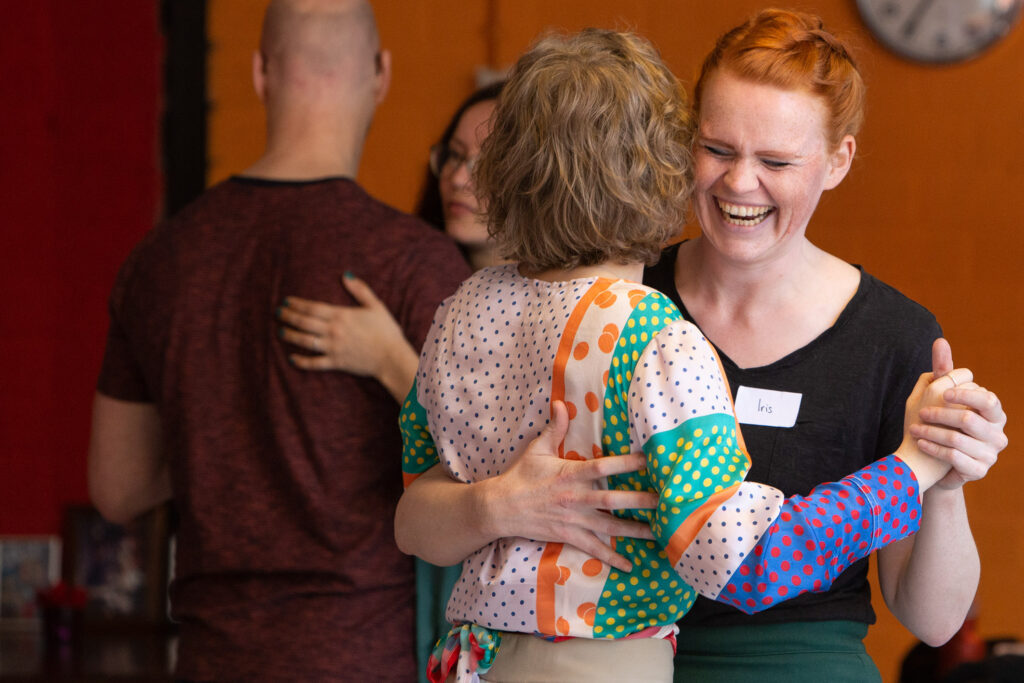
Did you start leading right when you started dancing?
Iris: “I started with Lindy Hop as a follow. Only later did I also try out some leading. But when I started Slow Bal at Slowfeet Studio, I immediately a chose to lead instead of follow.”
Didi: “The same applies to me. I started Lindy Hop as a follow. At one point I was curious about what it was like on the other side. During lessons you often notice that moves do not go well, and that it is difficult to find out what exactly is the cause. I wanted to know what it was like to lead so that I could also develop myself as a follow.”
Was the curiosity about the other role the only reason to start leading?
Didi: “I was stuck in the same level with my Lindy lessons for a while and I noticed that I was no longer making progress. Then leading is a whole new challenge. I tried to lead a bit myself during parties. One of the dance teachers then asked me if I would like to join some classes as a leader. And that’s how it started.”
Iris: “With my sister I regularly went to different dance workshops of various dance styles. We liked to dance together and then someone has to lead. That’s how I started it. In addition, I also noticed that during swing parties there are sometimes many more follows than leads. Then you just sit on the sidelines for a bit, waiting for a leader to become available. If you can lead and follow yourself, you can always dance with someone. But in the end, it did take a while before I developed an interest in leading.”
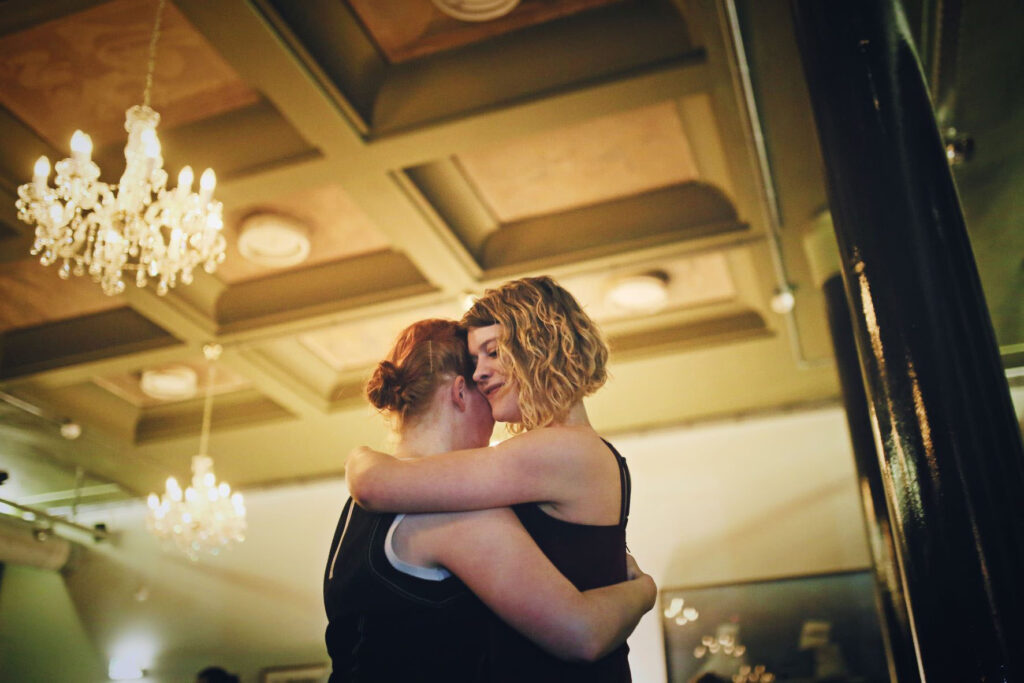
How do people respond to female leads?
Didi: “It varies a lot where you are. In The Netherlands people in general react positively. In my experience in France, women leaders are looked at more strangely and women initially think it’s a bit weird to dance with you. During an international workshop weekend I once experienced that I had registered with a man. He wanted to follow and I wanted to lead. During the rotation there was a woman who was completely amazed that she had to dance with me. She didn’t understand at all that if there was a man in the workshop who could lead, why she had to dance with another female. In other countries there is sometimes a bit of a threshold, but once they dance with you, they often really enjoy it.”
Iris, have you ever had negative reactions to you as a female leader?
Iris: “I haven’t really experienced negative reactions. I think the Rotterdam swing scene is very open and accessible. Sometimes people only dance one dance with you, while in The Netherlands it is more common to dance two dances with someone. Then I never quite know whether it’s just me, or just the fact that people have different habits. In any case, it is accepted in the Netherlands that you dance a different role.”
Why don’t more women lead and men follow?
Didi: “For me it wasn’t even a very conscious choice to follow. In the lessons it was said that you did not have to take on the role that ‘fits your gender’. But it was in my head that I should stick to the traditional structure of men leading and women following. In the context of ‘just act normal’. Fortunately, we are now moving away from that mindset.”
Iris: “Perhaps that is also because teachers often still dance in the classical ‘men lead, female follow’ roles. Perhaps they should set a good example more often.”
Didi: “Men more often assume that they can learn to follow a bit themselves, and that it is not that difficult.”
Iris: “But in our culture it is also much more difficult to dance the role of a follow when you are a man. It often draws attention. Two women are allowed to kiss in public, but if two men do the same, they will be verbally abused. we don’t treat people equally.”
Didi: “Fortunately, there are men who follow. But with follows, the need seems a bit greater, because there are often too many of them.”
Iris: “It is mainly the dancers who are really serious and want to get better, who change roles.”
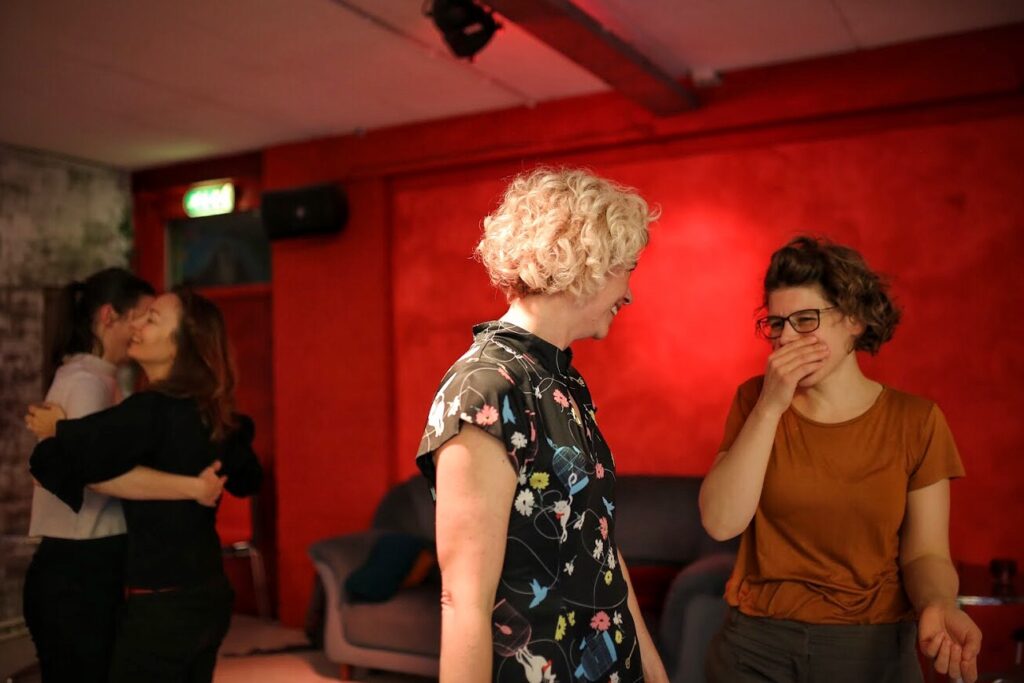
Which role do you like more and which is more difficult?
Didi: “I find being a lead more difficult, but that’s because I’m less practiced in it. As a lead you have to think about what you want, you have to take into account other couples around you and you have to steer your partner in the right direction. In the beginning, following is so much easier than leading. But later on this changes. The role I like the most depends on the dance, the music and my dance partner.”
Iris laughing: “Yeah, because you’re dealing with leads who have ridiculous plans and you’re supposed to execute them well! Both roles are equally difficult for me. What is so great about leading is that you can interpret the music in the dance and therefore make something cool out of it yourself. But as a lead you have to keep eight balls in the air, while also making it fun for one of those balls. As a follow, I have a hard time when a lead leads a lot of open moves, because I find that difficult. In addition, some leads dance very subtly, and then I find it very difficult to follow.”
Didi: “At least I can have a lot of fun with people in both roles.”
Iris: “That’s right, but having fun depends more on the click you have with a dancer. You can have lots of fun on the dancefloor, even when you’re both not so good at it.”
When do you have a dance click with someone?
Didi: “I think it has to do with style and personality. Just like when you meet new people. Sometimes it clicks and sometimes it doesn’t. When I have a lead who makes me go round and round, I often think ‘I’m not a Barbie doll’. But other follows might totally like that. When I’m leading, I often follow the follow. For example, I lead a move that the follower interprets differently. Instead of harshly correcting like some leads do, I go with what the follow is doing and pick up the thread from there.”

Iris, you just said very aptly that you want to make it fun for your dance partner (one of those balls). As a lead, are you responsible for how much fun the dance will be for your follow?
Iris: “Yes I think so. You are dancing together. As a lead, I feel the responsibility to put together a nice dance for my follow, because they have to execute all the things I lead.”
Didi: “But I’ve also had dances that weren’t very special in terms of moves, but were very nice dances nontheless.”
Iris: “Yes, as a follow, I think so too. But as a lead I still find that tensive and I do feel a certain pressure.”
Didi: “As a lead, I also had to get over that. If I’m having a good time, then my follower will probably like it too. There is no need for that pressure to make something very special out of it.”
Iris: “I have had this conversation with many starting leads. I keep telling them that it’s really fun to dance with them, because as a follow I get space to do things myself. But to get that imprinted in your head as a lead… that is a lot more difficult.”
Didi: “Maybe that’s also because the focus is often on the leads; especially for beginners. In the Lindy world you sometimes hear the instruction that ‘follows just have to follow’, while for leads there is always a more corrective instruction. That can create uncertainty and increase the pressure. I experienced this differently at Slowfeet Studio, among others. There, both leaders and followers receive valuable feedback.”
Do you often notice that follows give the leads heavy feedback?
Iris: “Yes, I have noticed that. Sometimes in lessons I’m just busy complimenting leads and telling them that they are doing really well and it’s okay if something doesn’t work out. They are sometimes completely stressed out.”
Didi: “There is also a big difference between saying that someone is not doing something right, or stating that something doesn’t feel quite right and then finding out together what the problem is.”

Are you better leads because you know how a follow experiences the dance?
Didi: “What I sometimes hear from follows is that I lead less forceful as a lead and rather guide them. So it is definitely different.”
Iris: “Because you have the experience of both roles, it is much easier to take into account what feels best for the other dancer. You really only achieve that by having danced that other role.”
Didi: “I have indeed learned a lot about following from leading. I once had a follow who had her thumb in a very unpleasant place and put pressure on it. That was so annoying that I then started to pay attention that I didn’t do that myself.”
So basically anyone who really wants to learn to dance should learn both roles?
Iris: “In the ideal world, we teach everyone to lead and follow from the start. And only when people have had an introduction to both roles, are they allowed to choose one to continue in.”
Didi: “Yes, I think so too. Then you also choose a role much more based on your personality. I know a few leads that I think would be much happier as a follow. But because of the social pressure and all the pigeonholing we do, they chose to lead. I can also imagine that it is a bigger step for men to dance with another man, more than with two women.”
Iris: “You don’t have to become a star in the other role. Knowing the basics helps a lot. So if you want to do yourself a favor, try both roles right from the start. Then we will quickly get rid of that pigeonholing.”
Didi: “There have been a lot of switchers at Slow Bal right from the start. There were several women who went on to lead. You (Deirdre) could lead and your dance partner Luciën could follow. Setting a good example will make others follow.”
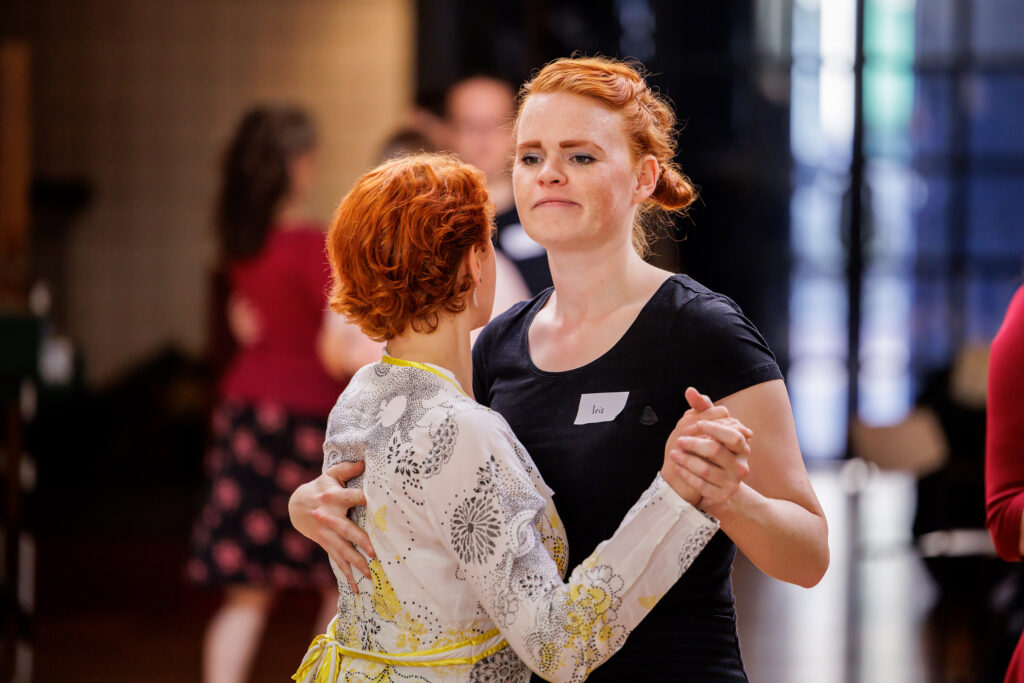
What would you like to say to dancers who are considering dancing the non-standard role?
Iris: “For us, choosing to lead may have come from the unfortunate circumstance that there are often not enough leads and too many follows, but it’s great fun to be able to dance both roles. So go do it. The sooner the better.”
Didi: “There are twice as many people to have fun with, that’s the best thing about it. Normally you only get to know the leads or follows, but if you dance both roles, you get to know everyone. And that comes in handy later at the bar!”
Want to know more about dancers who dance as both leads as follows? Click here to read the interview with dance couple Peter and Bianca.

